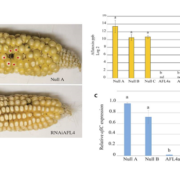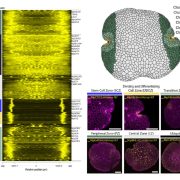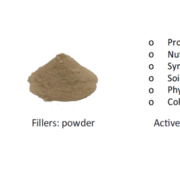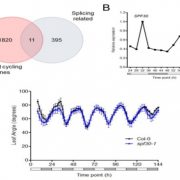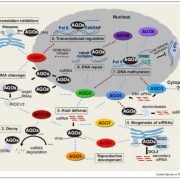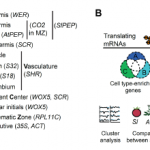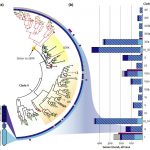Mystery of adventitious root formation in grapevine (Plant Physiol)
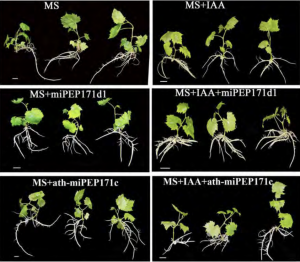 Grapevines (Vitis vinifera L.) are clonally propagated by stem cuttings, which depends on the formation of adventitious (stem-borne) roots. In this paper Chen at al., showed the function of microRNA encoded peptides (miPEPs) in adventitious root formation of cultured grape plantlets. MicroRNA biogenesis involves the transcription of microRNA genes (MIR) by RNA pol II to primary microRNA (pri-miRNA) which is further processed to precursor (pre-miRNA) and mature microRNA (miRNA). In grapevine, miR171 is encoded by 10 genes (vvi-MIR171a to vvi-MIR171j) and targets SCARECROW-LIKE15 and 27 (SCL15, 27) genes, which encode a GRAS domain protein involved in root development. Among these, vvi-MIR171d expression increases, and expression levels of its targets (SCL15, 27) decrease, just before adventitious root formation, indicating the potential role of vvi-MIR171d in root development. The authors identified three small open reading frames (sORF) encoding a potential miPEP in the 500bp upstream of pre-miR171d. Previously it has been shown that in some cases the overexpression of an miPEP can increase the transcription of its own MIR genes. Here, the authors observed increased expression of vvi-MIR171d when one of the sORFs, vvi-miPEP171d1, was overexpressed. Exogenous application of synthetic vvi-miPEP171d1 to the grape tissue culture plantlets increased the adventitious root formation, suggesting a possible use of this peptide in grapevine propagation. However, addition of Arabidopsis thaliana miPEP171c to cultured grape plantlets or vvi-miPEP171d1 to Arabidopsis did not show any effect on root development suggesting a species-specific function. Overall, this study shows the potential use of miPEP in the root development of tissue cultured perennial fruit crops. (Summary by Vijaya Batthula @Vijaya_Batthula) Plant. Physiol. 10.1104/pp.20.00197
Grapevines (Vitis vinifera L.) are clonally propagated by stem cuttings, which depends on the formation of adventitious (stem-borne) roots. In this paper Chen at al., showed the function of microRNA encoded peptides (miPEPs) in adventitious root formation of cultured grape plantlets. MicroRNA biogenesis involves the transcription of microRNA genes (MIR) by RNA pol II to primary microRNA (pri-miRNA) which is further processed to precursor (pre-miRNA) and mature microRNA (miRNA). In grapevine, miR171 is encoded by 10 genes (vvi-MIR171a to vvi-MIR171j) and targets SCARECROW-LIKE15 and 27 (SCL15, 27) genes, which encode a GRAS domain protein involved in root development. Among these, vvi-MIR171d expression increases, and expression levels of its targets (SCL15, 27) decrease, just before adventitious root formation, indicating the potential role of vvi-MIR171d in root development. The authors identified three small open reading frames (sORF) encoding a potential miPEP in the 500bp upstream of pre-miR171d. Previously it has been shown that in some cases the overexpression of an miPEP can increase the transcription of its own MIR genes. Here, the authors observed increased expression of vvi-MIR171d when one of the sORFs, vvi-miPEP171d1, was overexpressed. Exogenous application of synthetic vvi-miPEP171d1 to the grape tissue culture plantlets increased the adventitious root formation, suggesting a possible use of this peptide in grapevine propagation. However, addition of Arabidopsis thaliana miPEP171c to cultured grape plantlets or vvi-miPEP171d1 to Arabidopsis did not show any effect on root development suggesting a species-specific function. Overall, this study shows the potential use of miPEP in the root development of tissue cultured perennial fruit crops. (Summary by Vijaya Batthula @Vijaya_Batthula) Plant. Physiol. 10.1104/pp.20.00197


